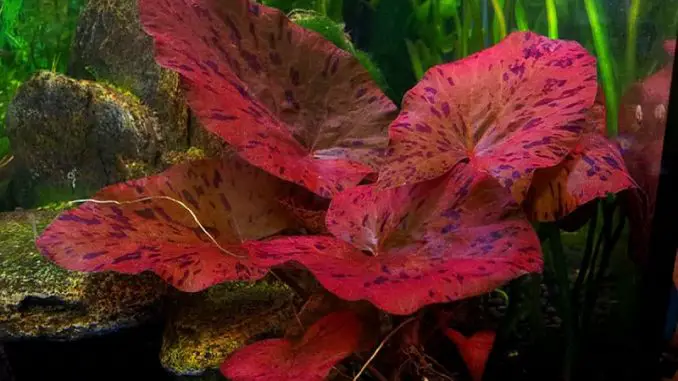
The tiger lotus is a freshwater species that’s used as a background or midground plant in aquariums. Found in a few different colors, this type of water lily is popular with aquarists because it is easy to grow, care for, and adds vibrant color to the tank.
Because it grows from a bulb that needs to be buried in the substrate, the tiger lotus isn’t suitable in a tank with fish that enjoy digging around the bottom of the tank. Constant digging uproots the bulb and interferes with the plant’s growth.
TABLE OF CONTENTS
Tiger Lotus Facts & Overview
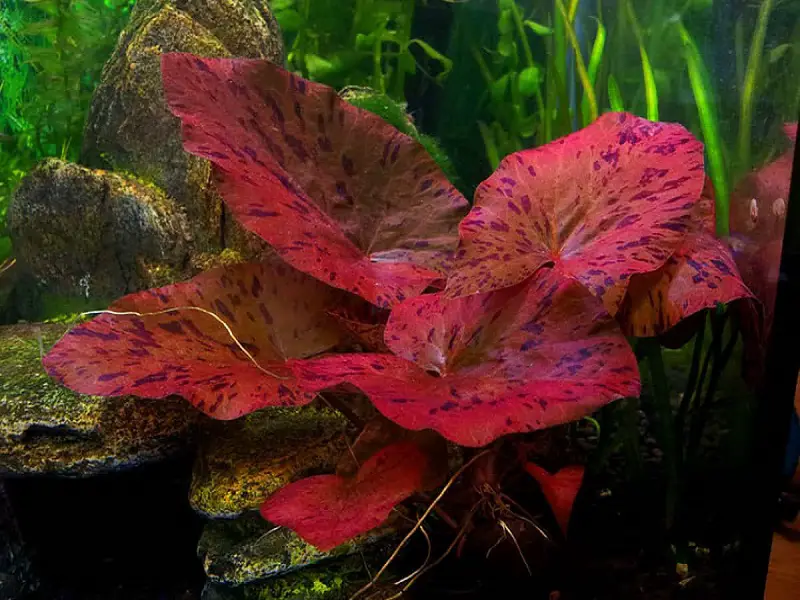
| Scientific name: | Nymphaea lotus |
| Common names | Tiger lotus, white lotus, Egyptian lotus |
| Origin: | Southeast Asia and East Africa |
| Size: | 7–31 inches |
| Growth rate: | Fast |
| Color: | Red or green |
| Aquarium placement: | Midground or background |
| Water type: | Freshwater |
| Temperature: | 71–82ºF (22–28ºC) |
| pH: | 6.0–8.0 |
Origin
Native to the tropical areas of Southeast Asia and East Africa, the tiger lotus is commonly found in small lakes and ponds with slow-moving water.
In an aquarium, this plant grows underwater while constantly gravitating upwards towards the surface.
Availability
Tiger lotuses are easy to find in pet stores and are usually sold as bulbs with only a few small leaves. As the bulb takes root and grows, more leaves develop.
Expect to pay $5 to $20 for a tiger lotus, depending on size. Larger, more established plants are more expensive than smaller plants or bulbs.
Find tiger lotus plants online at:
Appearance & Size
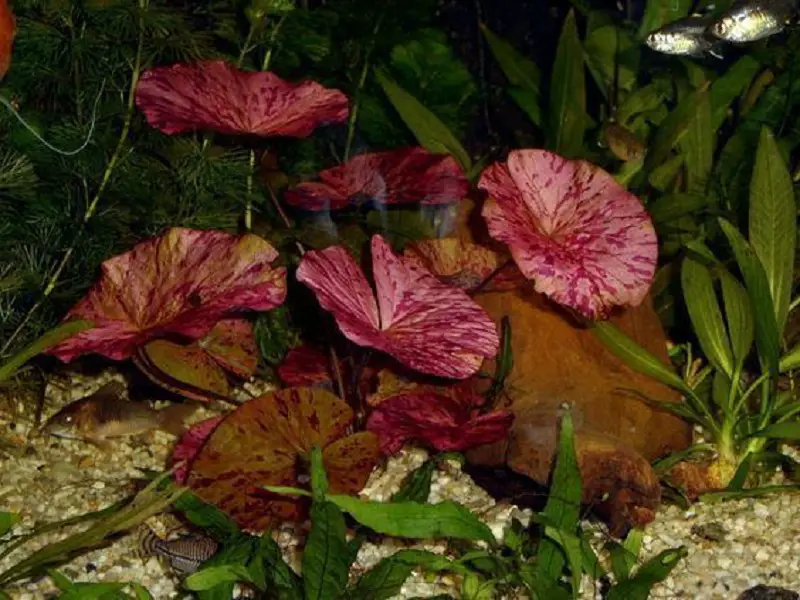
The tiger lotus grows from a bulb with purple roots that take hold in the tank’s substrate. The plant’s leaves are round or arrow-shaped, and either red or green.
While underwater, the leaves may have dark speckles on them, but the color becomes brighter as the leaves reach the surface and receive more exposure to sunlight. Once the leaves are on the surface, the tiger lotus often blossoms with a small white flower.
Fast growers, tiger lotuses vary in size and spread quickly across the tank. Height varies from 7 inches, for young plants, to as big as 31 inches for older plants. The leaves can be coaxed to remain below the surface, limiting the growth of the plant.
Benefits of Tiger Lotus in Aquariums
Apart from its striking beauty, the tiger lotus contributes to the tank’s overall well-being by absorbing high levels of iron, nitrates, and CO2.
The plant’s broad, flat leaves provide an ideal place for skittish fish to hide, and some fish also lay their eggs under the leaves during breeding.
Compatible Tank Mates
Small fish like guppies, mollies, angelfish, and tetras all make good tank mates for the tiger lotus. These fish tend to nibble a little on the edges of the plant’s leaves without causing serious damage to the plant.
Most shrimp varieties, like red cherry shrimp, blue velvet shrimp, and blue tiger shrimp, are suitable tank mates.
Avoid placing aggressive fish like oscars, cichlids, and red devils in the tank because these fish eat tiger lotus leaves, which kills the plant.
The tiger lotus isn’t compatible with most other aquarium plants, because it needs its own space. Don’t plant other plants too close, because anything invading this plant’s space inhibits its growth.
Tiger Lotus Tank Conditions & Requirements
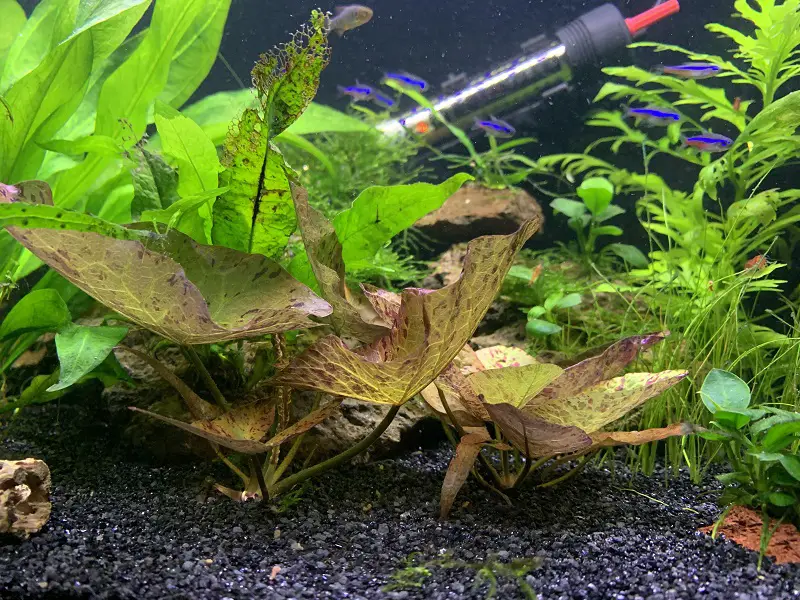
Tiger lotuses are easy to care for and thrive in a tank that resembles the slow-moving or stagnant water of their native ponds and lakes. These plants tolerate a broad range of water temperatures and conditions.
A nutrient-rich, gravel substrate with high levels of iron provides the tiger lotus with the elements needed for healthy growth.
Tank Requirements
In the wild, tiger lotuses grow prolifically in the warm stagnant ponds and lakes in the tropical regions of East Africa and Southeast Asia. The aquarium environment must replicate those conditions.
A water pump that provides a slow, gentle current, and a heater that keeps the water temperature warm and stable are essential items for the tank.
Tank Conditions
The tiger lotus starts off small, but with the right tank conditions, this plant grows rapidly towards the surface, spreading sideways as it grows.
Follow this guide for the ideal tank conditions for a tiger lotus:
| Water type: | Freshwater |
| Tank size: | 10 gallons |
| Water temperature: | 72–83ºF (22–28ºC) |
| Substrate: | Well fertilized, nutrient-rich soil or fine-grained sand |
| Tank placement: | Midground or background |
| Acidity: | 6.0–8.0 pH |
| Water hardness: | 2–15 dGH |
| Filter: | Medium strength to provide gentle water flow |
| Light type & strength: | Low to medium fluorescent lighting |
| Hours of light: | 8–10 hours per day |
Tank Placement & Aquascaping
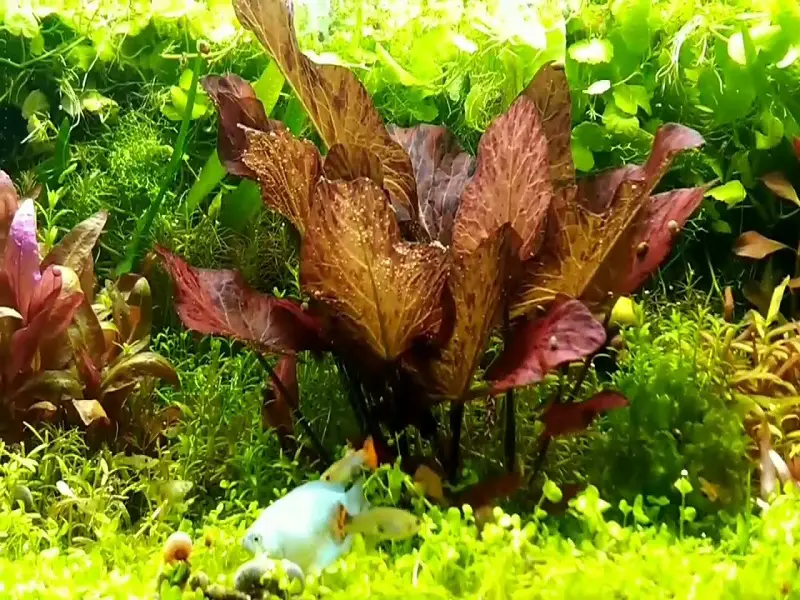
Tiger lotuses draw a lot of nutrients from the substrate and emit a chemical that stunts the growth of other plants. Give lotuses plenty of space in the tank without other plants nearby, and avoid placing the tiger lotus under other plants that create shade. Exposure to light intensifies the bright red color of the tiger lotus’s leaves.
Introducing Tiger Lotus in the Aquarium
Before introducing a tiger lotus to the aquarium, certain precautions are necessary.
Quarantine a new tiger lotus for a week before placing it in the aquarium, unless the plant was grown in a laboratory under sterile conditions and the pot isn’t damaged.
Treat the plant with a chemical pesticide at the start of the quarantine period to kill any possible pests. Quarantining the plant prevents potential infestations of pests that could inadvertently transfer to the aquarium.
How to Plant Tiger Lotus
Tiger lotuses can be planted as bulbs or as established plants. To plant a tiger lotus bulb, bury it up to halfway in the substrate. The bulb takes root easily, but if the entire bulb is buried it will rot. Planting the bulb in a small pot which is then placed in the substrate prevents the roots from spreading far, and contains the plant’s growth. Once the roots are established, leaves will start growing and spreading.
When planting an established tiger lotus in an aquarium, give the plant enough space on all sides so that it doesn’t come into contact with other plants. Ensure that the roots are completely covered by the substrate.
To prevent the tiger lotus’s roots from spreading too far and taking over the substrate, contain the roots using the following method:
Equipment:
- A 1-liter plastic container
- Mesh fabric, big enough to cover the container
- Fishing line
- 4 cups of nutrient-rich substrate
- 2 Fertilizer tablets or capsules
Steps:
- Place the substrate and fertilizer tablets in the container
- Plant the tiger lotus bulb in the substrate
- Wrap the container in mesh and tie the mesh tightly with fishing line
- Position the container in the tank, using rocks and pieces of driftwood to cover the container
Care & Growing Guide
Tiger lotuses are easy to care for and are ideal for beginner aquarists, because these plants are tough, resilient, and don’t need much attention.
As long as the tiger lotus’s tank is kept clean and free of algae, this plant will thrive and grow rapidly. Regular trimming of the leaves helps to contain the plant’s spread and prevents the tiger lotus from taking over the tank.
Nutrition
Use quality fertilizer to provide sufficient nutrition for the tiger lotus. The leaves get their rich color from the nutrients in the substrate.
Adding fertilizer tablets or capsules to the substrate increases the nitrogen and iron levels, helping to maintain the leaves’ vibrant red color.
Using a diffuser increases the CO2 level in the aquarium, boosting the tiger lotus’s healthy development.
Maintenance
Wilting leaves that are limp and brownish indicate that the tiger lotus needs more nourishment. Add fertilizer tablets to the substrate to solve this issue.
The tiger lotus’s leaves burn easily when overexposed to light. Prevent the leaves from burning by keeping the plant well-trimmed so that the leaves don’t spread above the surface of the water. Trim excess leaves that are above the water’s surface by cutting off the biggest ones at the base of the lily pad.
Algae growth is common in the tiger lotus’s tank and can be avoided by cleaning the tank regularly.
Propagation
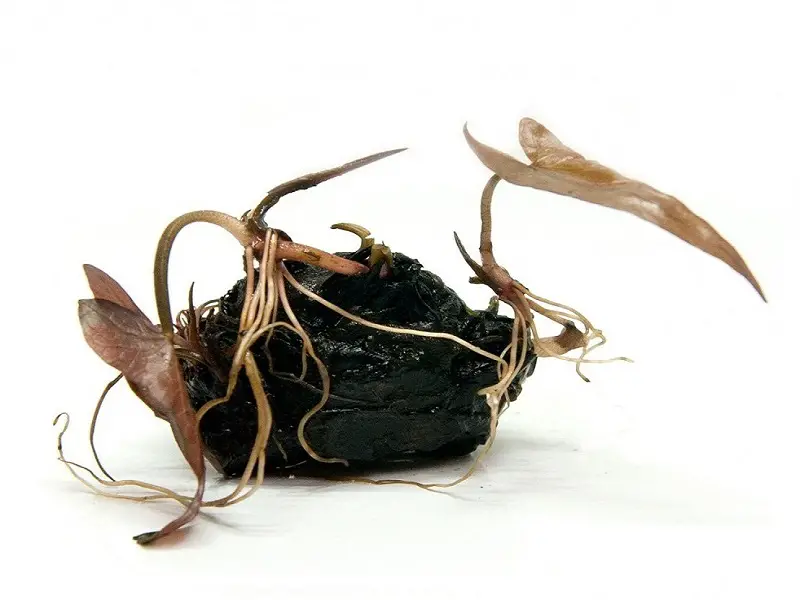
The tiger lotus self-propagates by growing seeds. A flower containing seeds develops on untrimmed lily pads. When the flower dies, these seeds fall off and land on the substrate.
To contain unwanted self-propagation, remove the flowers before they die and release their seeds into the tank.
Another method of propagation is to buy a bulb and place it on top of the substrate. Small shoots growing from the bulb become healthy roots. Cut these roots off and insert them into the substrate.
Encourage the roots to take hold and grow by increasing the light and raising the water temperature by three or four degrees until a new plant breaks through the substrate.
Should You Get a Tiger Lotus for Your Aquarium?
A tiger lotus is a hardy plant that’s easy to care for, so if you want a plant that grows quickly and doesn’t need much special attention, the tiger lotus is an ideal choice.
Don’t get a tiger lotus if you want a lot of other plants because tiger lotuses don’t do well in crowded tanks. Avoid getting a tiger lotus if you have aggressive fish in your aquarium because these fish will eat the plant.
Despite needing regular trimming, the tiger lotus is a wonderful addition to tanks and adds vibrant color to any aquarium.

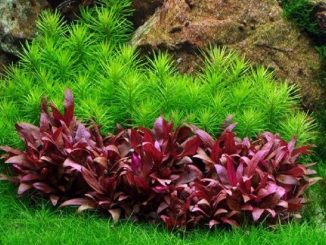

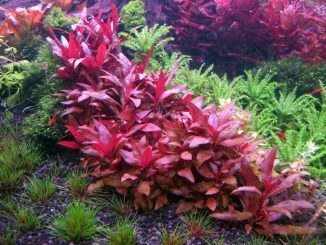

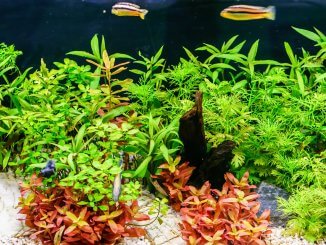
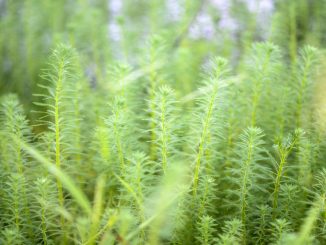
Be the first to comment